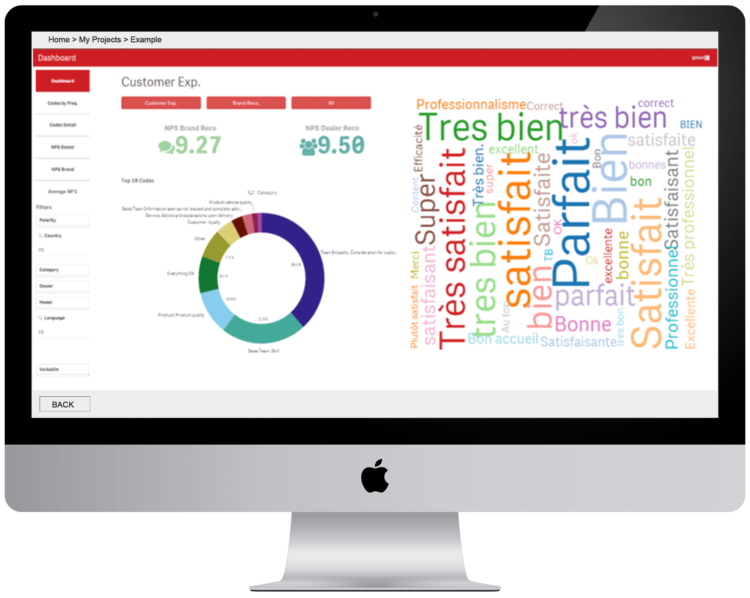In today’s digital age, the sheer volume of textual data available is overwhelming. From social media posts to customer reviews, businesses and individuals are inundated with an abundance of text that needs to be analyzed for valuable insights. This is where text analysis software comes into play. This powerful tool harnesses the power of natural language processing and machine learning algorithms to extract meaningful information from unstructured text. In this article, we will explore the capabilities of text analysis software and how it can revolutionize the way we understand and utilize language.
1. Sentiment Analysis: Understanding Emotions and Opinions
Sentiment analysis is a key feature of text analysis software that enables businesses to gauge public opinion about their products or services. By analyzing the sentiment expressed in customer reviews, social media posts, and other textual data, companies can gain valuable insights into customer satisfaction levels and identify areas for improvement. Text analysis software uses advanced algorithms to classify text as positive, negative, or neutral, allowing businesses to track trends and sentiment over time. This information can be used to make data-driven decisions, enhance customer experiences, and improve overall brand perception.
Another application of sentiment analysis is in social listening. By monitoring social media conversations, brands can quickly identify and address any negative sentiment surrounding their products or services. This proactive approach helps companies maintain a positive brand image and promptly resolve customer issues. Text analysis software provides real-time sentiment analysis, enabling businesses to respond swiftly to emerging trends or crises.
2. Topic Modeling: Uncovering Hidden Themes
Text analysis software goes beyond simple keyword searches by employing topic modeling techniques. Topic modeling is a statistical method that identifies recurring themes or topics within a large corpus of text. By analyzing patterns and co-occurrences of words, text analysis software can automatically categorize documents into distinct topics without any prior knowledge of the data.
This capability is particularly useful for researchers, content creators, and marketers who deal with large volumes of text. By automatically organizing and categorizing documents based on their underlying themes, text analysis software saves time and effort. It allows users to quickly navigate through vast amounts of information, identify relevant documents, and extract key insights. Topic modeling can also be used for content recommendation systems, personalized marketing campaigns, and trend analysis.
3. Named Entity Recognition: Identifying Entities in Text
Named Entity Recognition (NER) is a powerful feature of text analysis software that identifies and classifies named entities within a text. Named entities can be anything from people’s names to locations, organizations, dates, or even monetary values. By automatically extracting and categorizing these entities, text analysis software enables users to gain a deeper understanding of the information contained within the text.
NER has numerous applications across various industries. In finance, it can be used to extract relevant information from financial reports or news articles, such as company names, stock tickers, or financial figures. In healthcare, NER can help identify medical conditions, treatments, or drug names from patient records or medical literature. By automating this process, text analysis software saves time and reduces the risk of human error.
4. Text Summarization: Condensing Information for Quick Insights
With the exponential growth of textual data, the ability to quickly summarize and extract key information is crucial. Text analysis software offers text summarization capabilities that condense lengthy documents into concise summaries while preserving the most important information. This feature is particularly valuable for researchers, journalists, and professionals who need to process large amounts of text efficiently.
Text summarization algorithms use various techniques such as extraction or abstraction to generate summaries. Extraction-based summarization identifies important sentences or phrases from the original text and stitches them together to form a summary. On the other hand, abstraction-based summarization generates summaries by paraphrasing and rephrasing the original text. By providing these summarization techniques, text analysis software allows users to digest information quickly, make informed decisions, and stay up-to-date with the latest developments in their field.
Conclusion:
Text analysis software has emerged as a powerful tool for unlocking the hidden insights within textual data. From sentiment analysis to topic modeling, named entity recognition, and text summarization, this software offers a wide range of capabilities that can revolutionize the way businesses and individuals understand and utilize language. By harnessing the power of natural language processing and machine learning, text analysis software empowers users to extract valuable information, make data-driven decisions, and stay ahead in today’s information-driven world.



